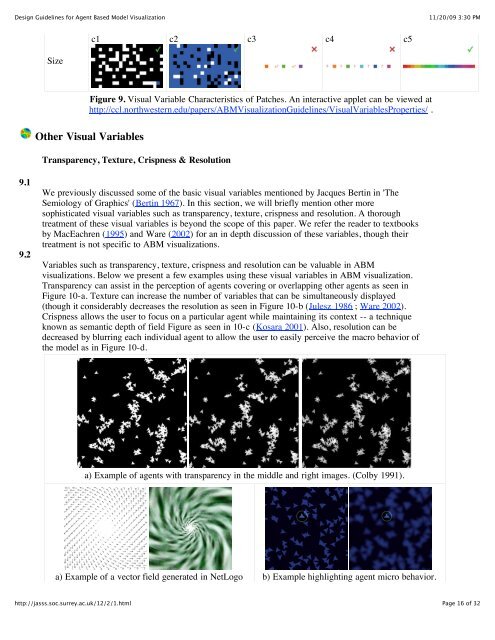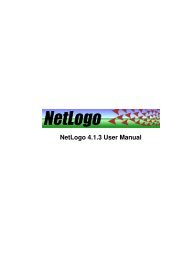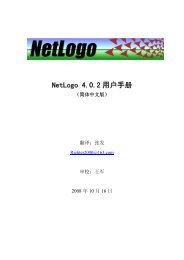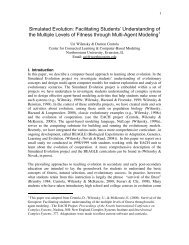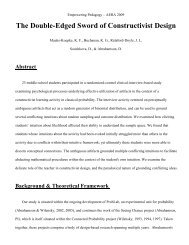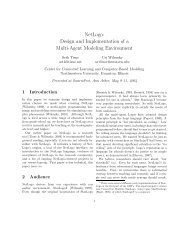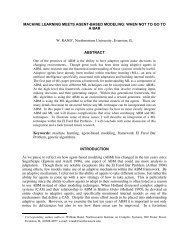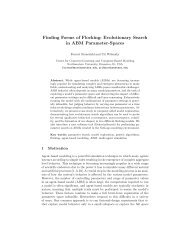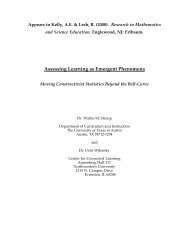Design Guidelines for Agent Based Model Visualization
Design Guidelines for Agent Based Model Visualization
Design Guidelines for Agent Based Model Visualization
You also want an ePaper? Increase the reach of your titles
YUMPU automatically turns print PDFs into web optimized ePapers that Google loves.
<strong>Design</strong> <strong>Guidelines</strong> <strong>for</strong> <strong>Agent</strong> <strong>Based</strong> <strong>Model</strong> <strong>Visualization</strong><br />
9.1<br />
9.2<br />
Size<br />
http://jasss.soc.surrey.ac.uk/12/2/1.html<br />
c1 c2 c3 c4 c5<br />
Figure 9. Visual Variable Characteristics of Patches. An interactive applet can be viewed at<br />
http://ccl.northwestern.edu/papers/ABM<strong>Visualization</strong><strong>Guidelines</strong>/VisualVariablesProperties/ .<br />
Other Visual Variables<br />
Transparency, Texture, Crispness & Resolution<br />
We previously discussed some of the basic visual variables mentioned by Jacques Bertin in 'The<br />
Semiology of Graphics' (Bertin 1967). In this section, we will briefly mention other more<br />
sophisticated visual variables such as transparency, texture, crispness and resolution. A thorough<br />
treatment of these visual variables is beyond the scope of this paper. We refer the reader to textbooks<br />
by MacEachren (1995) and Ware (2002) <strong>for</strong> an in depth discussion of these variables, though their<br />
treatment is not specific to ABM visualizations.<br />
Variables such as transparency, texture, crispness and resolution can be valuable in ABM<br />
visualizations. Below we present a few examples using these visual variables in ABM visualization.<br />
Transparency can assist in the perception of agents covering or overlapping other agents as seen in<br />
Figure 10-a. Texture can increase the number of variables that can be simultaneously displayed<br />
(though it considerably decreases the resolution as seen in Figure 10-b (Julesz 1986 ; Ware 2002).<br />
Crispness allows the user to focus on a particular agent while maintaining its context -- a technique<br />
known as semantic depth of field Figure as seen in 10-c (Kosara 2001). Also, resolution can be<br />
decreased by blurring each individual agent to allow the user to easily perceive the macro behavior of<br />
the model as in Figure 10-d.<br />
a) Example of agents with transparency in the middle and right images. (Colby 1991).<br />
a) Example of a vector field generated in NetLogo<br />
b) Example highlighting agent micro behavior.<br />
11/20/09 3:30 PM<br />
Page 16 of 32


